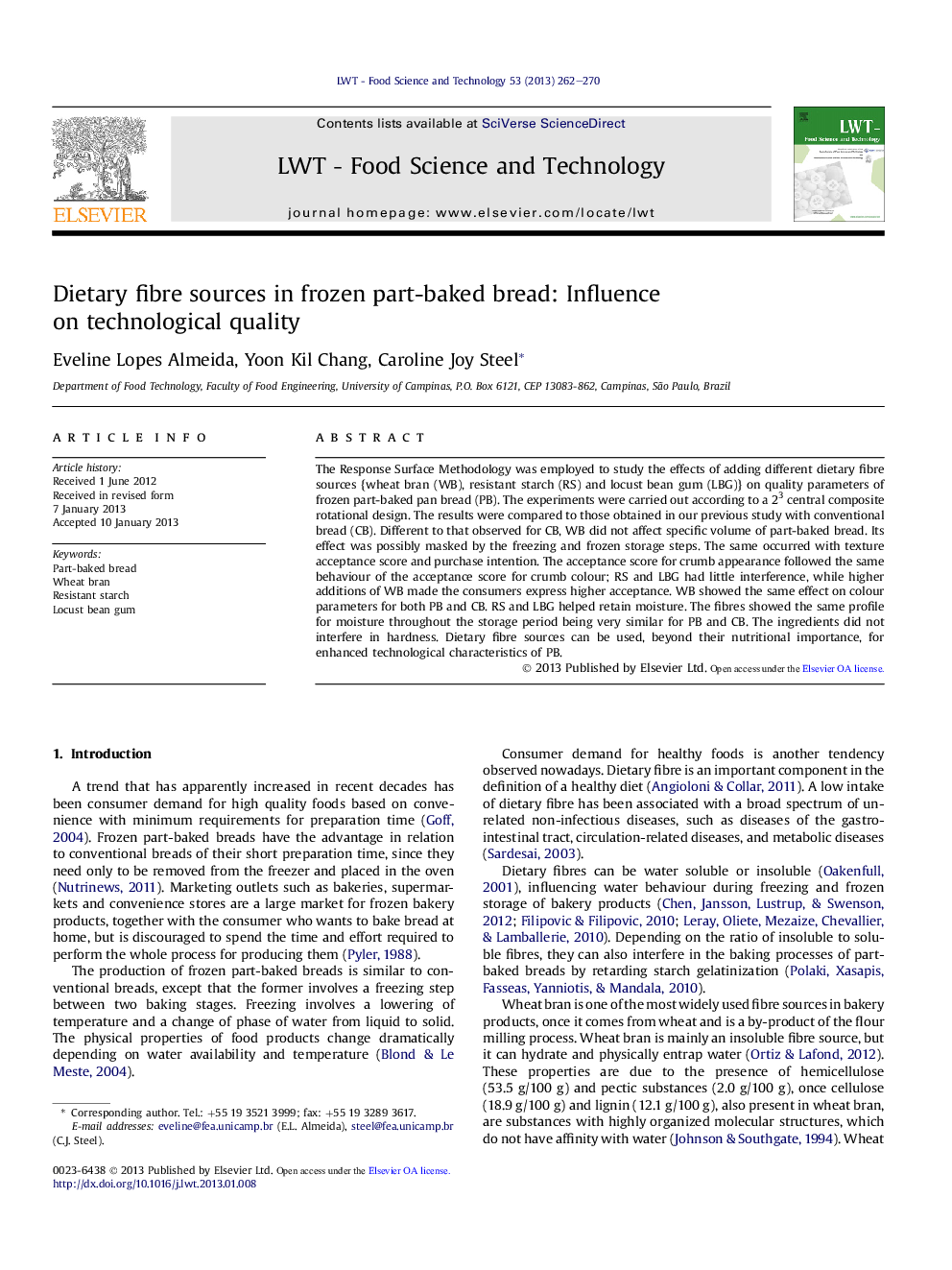| کد مقاله | کد نشریه | سال انتشار | مقاله انگلیسی | نسخه تمام متن |
|---|---|---|---|---|
| 6403115 | 1330892 | 2013 | 9 صفحه PDF | دانلود رایگان |

The Response Surface Methodology was employed to study the effects of adding different dietary fibre sources {wheat bran (WB), resistant starch (RS) and locust bean gum (LBG)} on quality parameters of frozen part-baked pan bread (PB). The experiments were carried out according to a 23 central composite rotational design. The results were compared to those obtained in our previous study with conventional bread (CB). Different to that observed for CB, WB did not affect specific volume of part-baked bread. Its effect was possibly masked by the freezing and frozen storage steps. The same occurred with texture acceptance score and purchase intention. The acceptance score for crumb appearance followed the same behaviour of the acceptance score for crumb colour; RS and LBG had little interference, while higher additions of WB made the consumers express higher acceptance. WB showed the same effect on colour parameters for both PB and CB. RS and LBG helped retain moisture. The fibres showed the same profile for moisture throughout the storage period being very similar for PB and CB. The ingredients did not interfere in hardness. Dietary fibre sources can be used, beyond their nutritional importance, for enhanced technological characteristics of PB.
⺠Different dietary fibre sources were added to a frozen part-baked bread formulation. ⺠Wheat bran, resistant starch and locust bean gum did not affect specific volume. ⺠Wheat bran made the consumers express higher acceptance for crumb sensory attributes. ⺠Resistant starch and locust bean gum helped to retain moisture throughout the storage period.
Journal: LWT - Food Science and Technology - Volume 53, Issue 1, September 2013, Pages 262-270